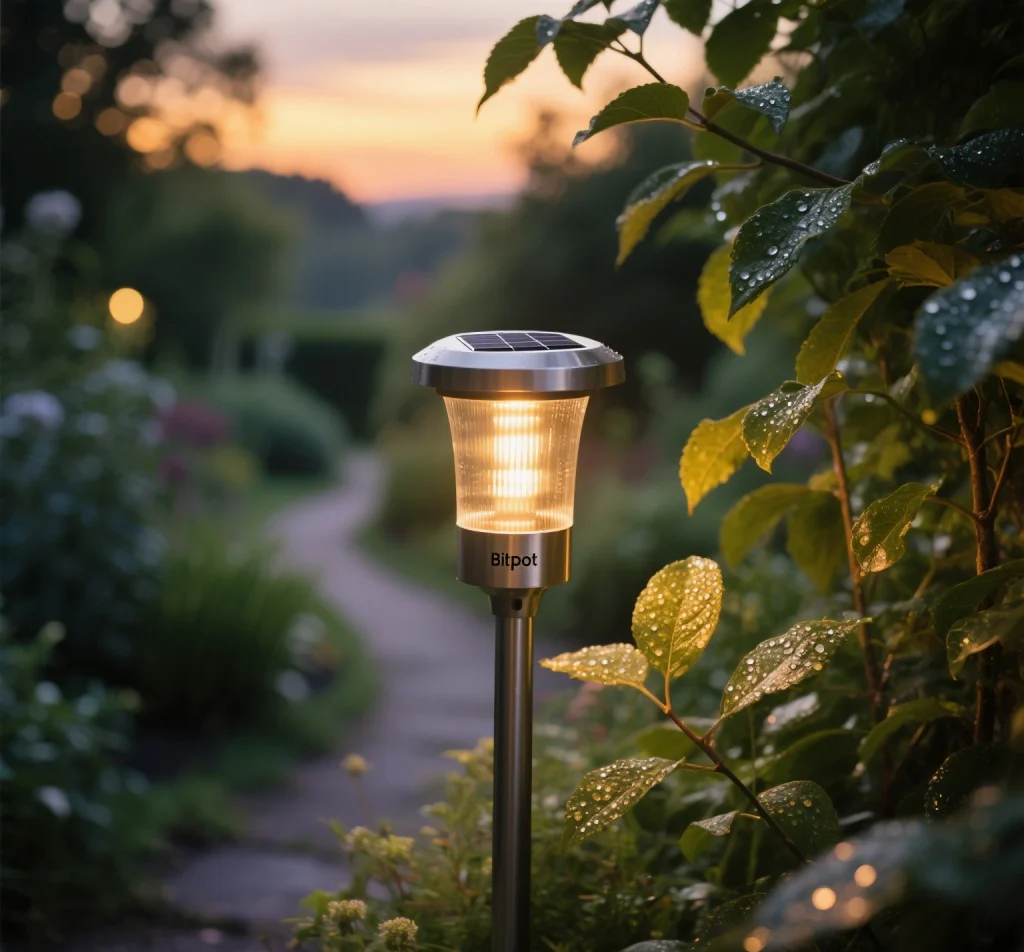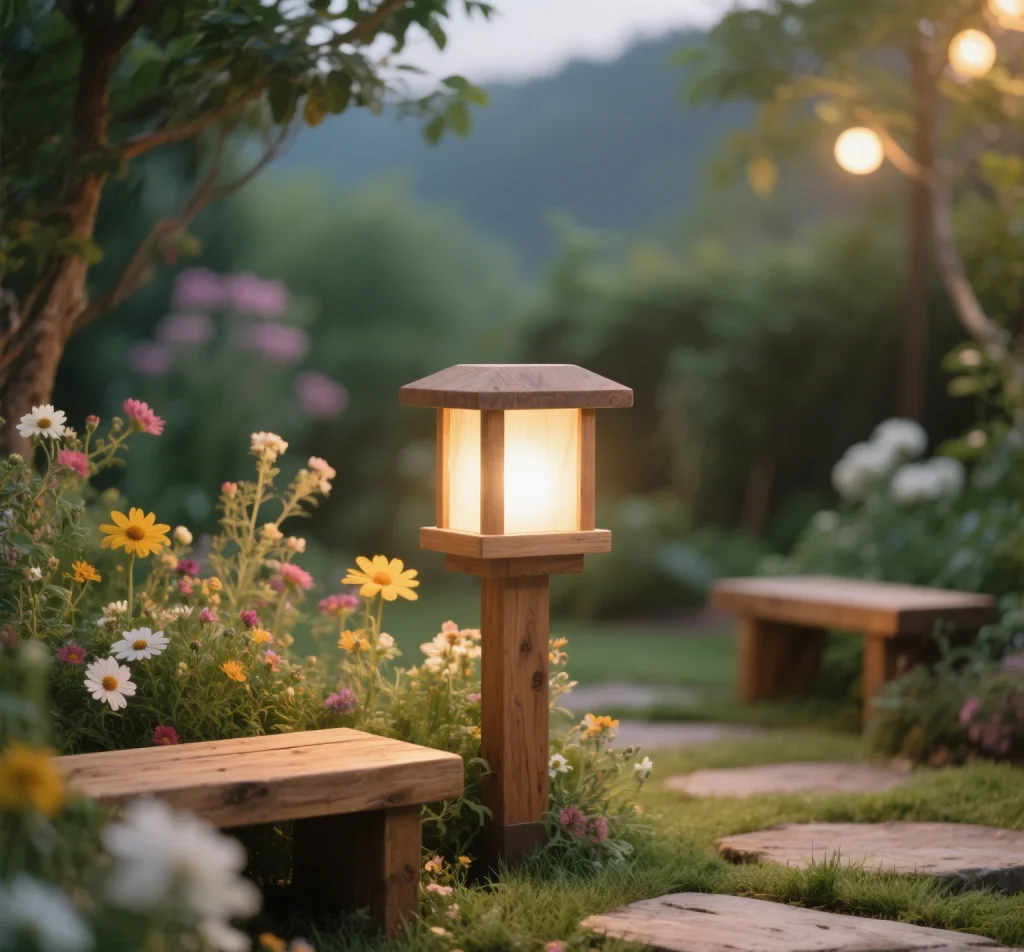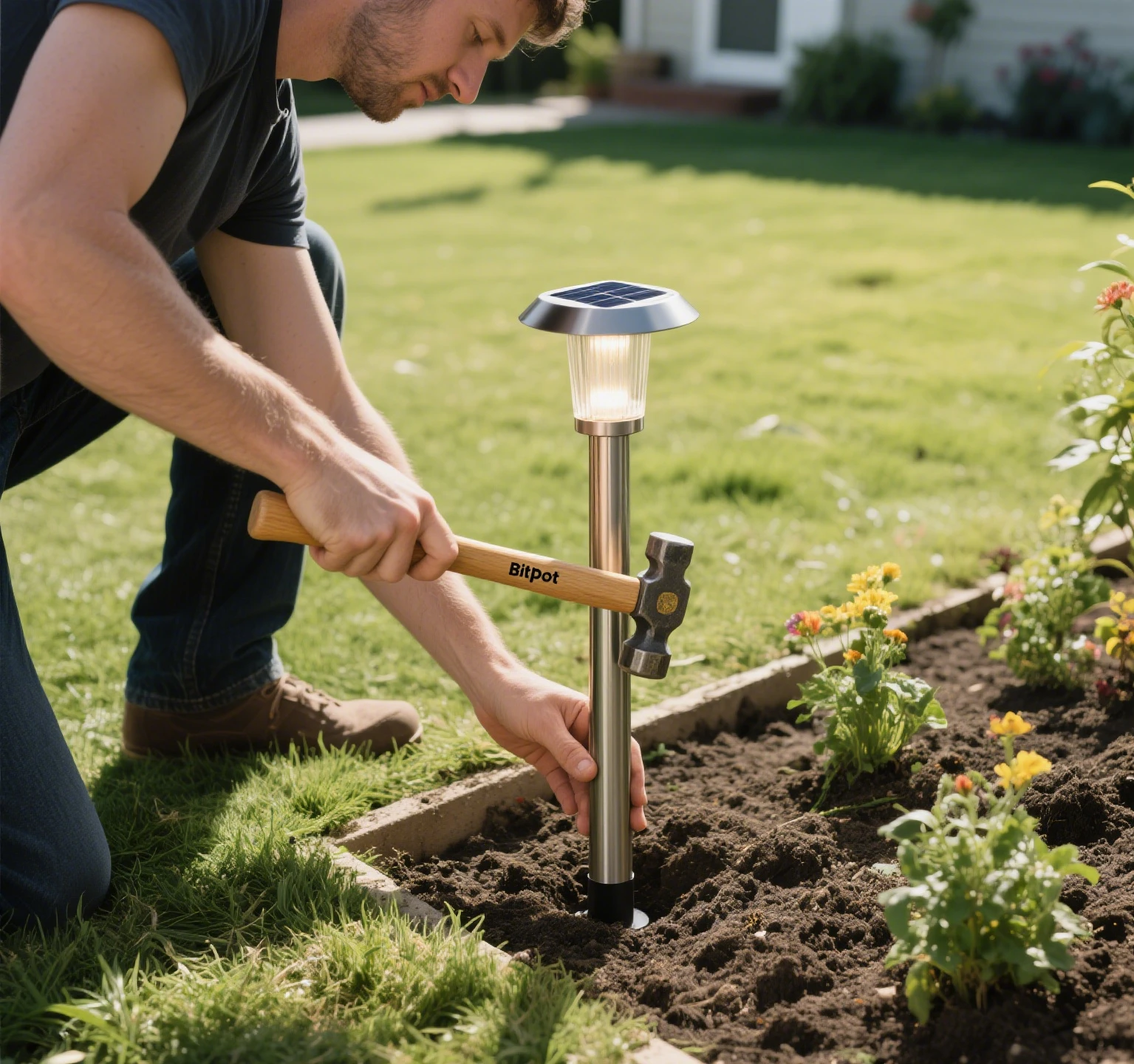In a garden, solar garden lights not only provide illumination at night but also add a unique ambiance, making them an ideal choice for many households to decorate outdoor spaces. However, the market offers a wide variety of solar garden lights with varying quality. How can you select the right product? We can evaluate from four aspects: lighting performance, battery life, material and durability, and design and compatibility. For example, solar garden lights from well-known brands like Bitpott not only ensure quality but also offer diverse design options to meet different users’ needs.

Lighting Performance: Meeting the Lighting Needs of Different Scenarios
Lighting performance is one of the core functions of solar garden lights, directly affecting their effectiveness at night. We need to focus on the light’s brightness, illumination range, and lighting modes.
In terms of brightness, it is typically measured in lumens (Lm). Different usage scenarios require different brightness levels. For instance, solar pathway lights used to illuminate garden paths generally need 30–50 lumens, which is sufficient to clearly light the path without being overly dazzling. Bitpott’s solar pathway light series provides 30–50 lumens, specifically designed for garden paths, ensuring safe illumination while remaining soft and non-glaring. For lighting the central area of a garden, higher brightness may be needed to meet the demands of activities in the garden.
The illumination range is also crucial. Take Luna, who lives in the suburbs, as an example. Her garden has a winding path, and she wanted solar garden lights to evenly illuminate the entire path, avoiding dark spots. When choosing lights, she paid special attention to the beam angle and selected a model with a 120-degree illumination angle, allowing the light to cover a wider range, ensuring the path is safe and bright at night.
Additionally, some solar garden lights offer multiple lighting modes, such as constant-on mode, energy-saving mode, and motion-sensing mode. Ethan enjoys hosting small gatherings in his garden and chose solar garden lights with multiple lighting modes. During gatherings, he sets the lights to constant-on mode for ample lighting; on regular nights, he switches to energy-saving mode, which saves power while creating a soft ambiance. When someone enters the garden, the motion-sensing mode automatically activates the light, serving a security function. Some of Bitpott’s products support three-level brightness adjustments, allowing users to switch between modes based on actual needs, balancing practicality and energy efficiency.

Battery Life: Ensuring Uninterrupted Lighting All Night
The battery life of solar garden lights primarily depends on the performance of the battery and solar panel. As the component that stores electrical energy, the battery’s type and capacity are critical. Common battery types on the market include lead-acid batteries, nickel-metal hydride (NiMH) batteries, and lithium batteries. Lithium batteries, with their large capacity, long lifespan, and small size, have gradually become the mainstream choice.
The efficiency of the solar panel determines how much energy the battery can store. High-quality solar panels use efficient photovoltaic materials, capable of absorbing more solar energy under the same lighting conditions. Sophia, who lives in an area with relatively short sunlight hours, paid special attention to battery capacity and solar panel efficiency when purchasing solar garden lights. She chose lights equipped with a 2000mAh lithium battery and an efficient polycrystalline silicon solar panel, which can ensure all-night lighting even during consecutive cloudy days. Bitpott’s solar garden lights use 1450mAh NiMH batteries paired with efficient solar panels, requiring only 4–8 hours to fully charge under sufficient sunlight, meeting the needs of all-night illumination.
Conversely, overlooking battery life can cause inconvenience. Alex, a user, once purchased solar garden lights with small battery capacity and low-efficiency solar panels. They worked normally on sunny days, but during consecutive cloudy days, the lights would run out of power in the middle of the night, failing to meet his lighting needs. Therefore, when purchasing, we should choose solar garden lights with suitable battery life based on local sunlight conditions and usage demands.
Material and Durability: Adapting to Complex Outdoor Environments
Outdoor environments are complex and variable, so solar garden lights need to have good material quality and durability to withstand prolonged exposure to wind, rain, sun, and other elements.
First, consider the housing material. Common housing materials include plastic, aluminum alloy, and stainless steel. Plastic lights are lightweight and inexpensive but have relatively poor durability, prone to aging and fading under long-term sunlight exposure. Aluminum alloy materials offer light weight, high strength, and corrosion resistance, making them a relatively ideal choice. Stainless steel is even more robust and durable, suitable for harsh environments like humid or saline conditions. Bitpott’s solar garden lights use high-impact ABS plastic housing combined with an IP65 waterproof rating, capable of resisting humid air, sea breezes, and functioning normally during heavy rain.
Next is the waterproof rating. Waterproof ratings are typically indicated by IP65, where the first X represents dust resistance, and the second X represents water resistance. For solar garden lights, a minimum IP44 waterproof rating is necessary to prevent rainwater from entering the light’s interior. Mason, who lives in a coastal area with humid air and corrosive sea breezes, chose solar garden lights with stainless steel housing and an IP65 waterproof rating. These lights not only withstand humid air and sea breeze erosion but also function normally during heavy rain, remaining in excellent condition after years of use.
Design and Compatibility: Perfectly Integrating with Garden Style
Solar garden lights are not only lighting tools but also part of garden decoration, so their design style needs to match the overall garden aesthetic.
In terms of appearance, there are various design options, such as modern minimalist, European classical, and rustic styles. For a modern minimalist garden, you can choose solar garden lights with clean lines and innovative shapes; for a European classical garden, lights with carved patterns and vintage colors are more suitable; for a rustic garden, lights with natural elements like leaves or flowers are ideal. Bitpott’s product line covers multiple design styles, including modern transparent rectangular designs and retro tungsten bulb designs, catering to different users’ aesthetic preferences.
Besides appearance, installation compatibility is also important. Some solar garden lights feature a wireless design, making installation convenient without the need for complex wiring—just fix the light in a suitable position. This is very convenient for users who enjoy decorating their gardens themselves. Moreover, many solar garden lights now support multiple installation methods, such as ground stakes, wall mounts, or poles, allowing users to choose based on the garden’s specific layout and needs.
For example, Lila, who lives in a city apartment, has a small balcony garden. She chose a wall-mounted solar garden light with a simple, stylish appearance that complements her balcony garden’s style. Installation was easy, requiring only screws to fix it to the wall, saving space while adding a touch of warm lighting to the balcony. Some of Bitpott’s products support three-level height adjustments, allowing users to flexibly adjust the light’s position based on the garden layout, enhancing the decorative effect.
Conclusion
In summary, when purchasing solar garden lights, we need to comprehensively consider lighting performance, battery life, material and durability, and design and compatibility. Brands like Bitpott, through technological innovation and user-friendly design, provide users with options that balance functionality and aesthetics. Only by selecting products that meet requirements in all these aspects based on your actual needs can solar garden lights perform optimally in your garden, bringing more convenience and beauty to your outdoor life.

Comments